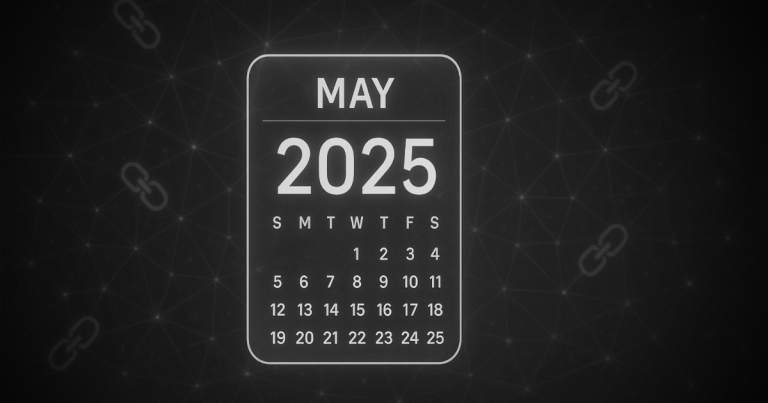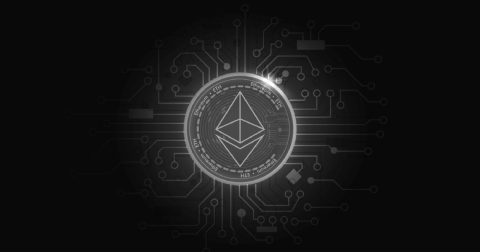May 2025 saw crypto markets consolidate near historic highs. Bitcoin hovered just under $108,000, Ethereum’s Pectra upgrade went live, NFT sales reversed their five-month slide, and stablecoin regulation advanced in the US, UK, and EU. The sector’s tone: less hype, more substance, and a clear focus on infrastructure, compliance, and real-world adoption.
This roundup covers the major crypto events that happened in May 2025.
Introduction:
Welcome to the May 2025 edition of The our Monthly Roundup by TDMM.If April was about realignment and reckoning, May was about construction and conviction. The crypto ecosystem shook off Q1’s volatility, with major protocols and regulators alike pivoting toward long-term solutions. Builders, institutions, and policymakers doubled down on infrastructure, compliance, and real-world adoption. The result? A market that’s not just recovering, but maturing.
Let’s unpack these details in our analysis.
1. Bitcoin: Bullish Bounce
- ETF inflows: New Bitcoin ETFs continued to attract institutional capital, providing a stabilizing force and deepening liquidity.
- On-chain strength: Transaction volumes and active addresses remained robust, signaling both retail and institutional engagement.
- Macro resilience: Despite mixed economic signals, Bitcoin “shook off” bearish sentiment and reclaimed bull-market territory.
2. Ethereum: Pectra Upgrade Ushers in a New Era
What Changed?
- Dual-Layer Hard Fork: Pectra unifies the Prague execution layer and Electra consensus layer, implementing 11 Ethereum Improvement Proposals (EIPs).
- EIP-7702: Temporary Account AbstractionNow, externally owned accounts (EOAs) can temporarily act as smart contracts during transactions. This means wallets can batch transactions, sponsor gas fees, and enable programmable features—paving the way for more user-friendly and secure wallets.
- EIP-7251: Validator Capacity RaisedThe maximum stake per validator jumped from 32 ETH to 2,048 ETH. This allows institutional validators and staking services to consolidate operations, reducing complexity and increasing efficiency, while keeping participation open and decentralized.
- Enhanced Scalability & Lower Costs:Pectra increases transaction capacity (notably via EIP-7691), optimizes data availability for Layer-2s, and continues Ethereum’s push to lower user costs and speed up transactions.
- Developer & User Experience:The upgrade streamlines developer tooling and makes onboarding easier for new users, with features like transaction batching and flexible gas payments rolling out over the next few months.
Why It Matters:Pectra is the first upgrade truly focused on the end user, making Ethereum more accessible and efficient at a time when competition from new Layer-1s is fierce. It sets the stage for the next wave of DeFi, NFT, and mainstream adoption.
3. DeFi & Infrastructure
DeFi saw a wave of institutionalization and technical progress in May:
- Institutional DeFi: BlackRock, Aave, and Uniswap continued to deepen their DeFi involvement. Aave’s ongoing token buybacks and the adoption of fixed-yield tokens (Pendle PTs) are evidence of a maturing, yield-focused DeFi landscape.
- Global Expansion: The Kenya Digital Exchange (KDX) and Aave’s Lens Chain (an Ethereum Layer-2 overlay for decentralized social media) expanded DeFi’s reach into new markets and use cases.
- Security Upgrades: EigenLayer’s slashing upgrade improved restaking security, while Velar’s PerpDEX brought leveraged futures trading directly to Bitcoin via Stacks—a first for Bitcoin-native DeFi.
- Funding & Growth: Despite a 71% drop in Q1 funding for DeFi and Web3 gaming, the sector’s TVL remained robust, and new real-world asset (RWA) tokenization platforms gained traction, especially in Africa and Asia.
3. NFTs & Web3 Gaming
After months of sliding volumes, the NFT market posted its first monthly rise of 2025. Sales jumped 15% to $430 million, and transaction counts hit a yearly high (5.5 million). The sector’s narrative shifted from speculation to engagement:
- Gaming Leads: Projects like Cambria’s Risk-to-Earn MMO and the cross-game expansion of the PIXEL token proved that fun, utility, and interoperability are the new growth engines. These games are onboarding new users not just with rewards, but with real gameplay and digital ownership.
- Platform Shakeout: The closure of X2Y2 marketplace underscored that only the most innovative and user-centric platforms will survive. OpenSea and Blur continued to dominate, but competition is fierce.
- Engagement Up: Despite lower average prices, the number of buyers and sellers continued to climb, signaling sticky user interest and a maturing user base.
4. Stablecoins: Regulatory Spotlight and Strategic Shifts
Stablecoins remained the backbone of crypto capital markets, with USD-backed coins (USDT, USDC) accounting for over 90% of circulation and a total supply of $208 billion as of Q1 2025. May saw a convergence of regulatory efforts:
- U.S.: The GENIUS Act and STABLE Act advanced, proposing 1:1 reserves, regular audits, and clear oversight for payment stablecoins. The GENIUS Act moved to a Senate vote on May 27.
- Europe: MiCA regulations took effect, requiring full reserves and transparency, and allowing regulated banks to act as custodians.
- UK: The FCA published consultation papers on stablecoin issuance, custody, and prudential requirements for crypto firms on May 28. Draft legislation from HM Treasury aims to create a comprehensive UK regime.
The regulatory clarity is expected to unlock new institutional participation and drive stablecoin adoption in both DeFi and traditional finance.
5. Regulation: Dialogue, Clarity, and Global Engagement
May was a watershed for crypto regulation:
- U.S. House Hearing (May 6): Lawmakers and industry leaders debated the future of digital asset policy, with a focus on innovation and consumer protection.
- SEC v. Ripple (May 12): The high-profile case continued, with potential implications for XRP and the broader altcoin market. The industry watched closely for signals on how securities law will be applied to digital assets.
- FCA Consultations (UK, May 28): The FCA’s new proposals on stablecoins and crypto custody marked the UK’s most comprehensive step yet toward a regulated market.
- MiCA Implementation: European regulators began enforcing new standards, with banks and fintechs preparing for full compliance.
The tone of regulatory engagement shifted from confrontation to collaboration, with more open hearings, industry input, and a focus on practical frameworks.
6. On-Chain & Market Trends: Infrastructure for the Next Cycle
- Infrastructure Boom: Analysts like Matt Hougan pointed to improved scalability and transaction efficiency as drivers of a more sustainable bull cycle, with DeFi and Layer 2s leading the charge.
- Token Unlocks & Upgrades: The month was marked by several high-profile token unlocks (notably SUI, ENA, APT) and major protocol upgrades (including Ethereum’s Pectra, RUNE Mainnet 3.5, and IOTA’s new mainnet). While these events introduced short-term volatility—often leading to price swings as locked tokens entered circulation—they ultimately boosted network engagement. For instance, Ethereum’s Pectra upgrade improved scalability and user experience, while IOTA’s new mainnet focused on adoption and technical enhancements. These upgrades have encouraged both developers and institutional players to build and deploy new products, signaling growing confidence in the long-term viability of these ecosystems.
- Institutional Interest: Institutional participation continued to gather pace in May. Companies like MicroStrategy reported robust earnings driven by their Bitcoin holdings, while Coinbase expanded its product suite with new futures launches. The introduction of CME XRP futures on May 19 was a landmark, providing institutions with new avenues to hedge and gain exposure to digital assets. This wave of institutional activity is not only adding liquidity and stability to the market but is also driving the development of more sophisticated financial products, further legitimizing crypto in the eyes of traditional finance.
- AI x Blockchain: OpenAI’s GPT-4.1 rollout and new AI-monetization platforms continued to blur the line between Web3 and AI, while security concerns (malicious npm packages) kept developers vigilant.
Closing Thoughts
May 2025 confirmed that crypto is entering a new phase: less hype, more substance. Ethereum’s Pectra upgrade, Bitcoin’s rebound, the NFT market’s revival, and the march of stablecoin regulation all point to a maturing industry. Infrastructure upgrades and regulatory clarity are setting the stage for broader adoption and a longer bull run. The message for builders and investors: focus on fundamentals, watch the regulatory landscape, and get ready for the next wave.
We work with crypto-native teams focused on long-term value,, helping them design liquidity strategies that are practical, sustainable, and built for what’s next.
If you’re building for the long term, let’s connect — and make sure your project stands where the future is headed.
P.S – This is just for info, not financial advice. Always DYOR.





